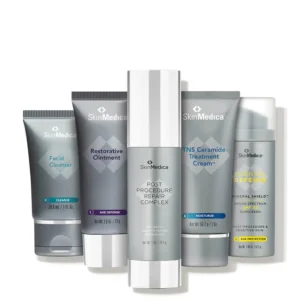RF Microneedling: Review and What to Know
April 6, 2021
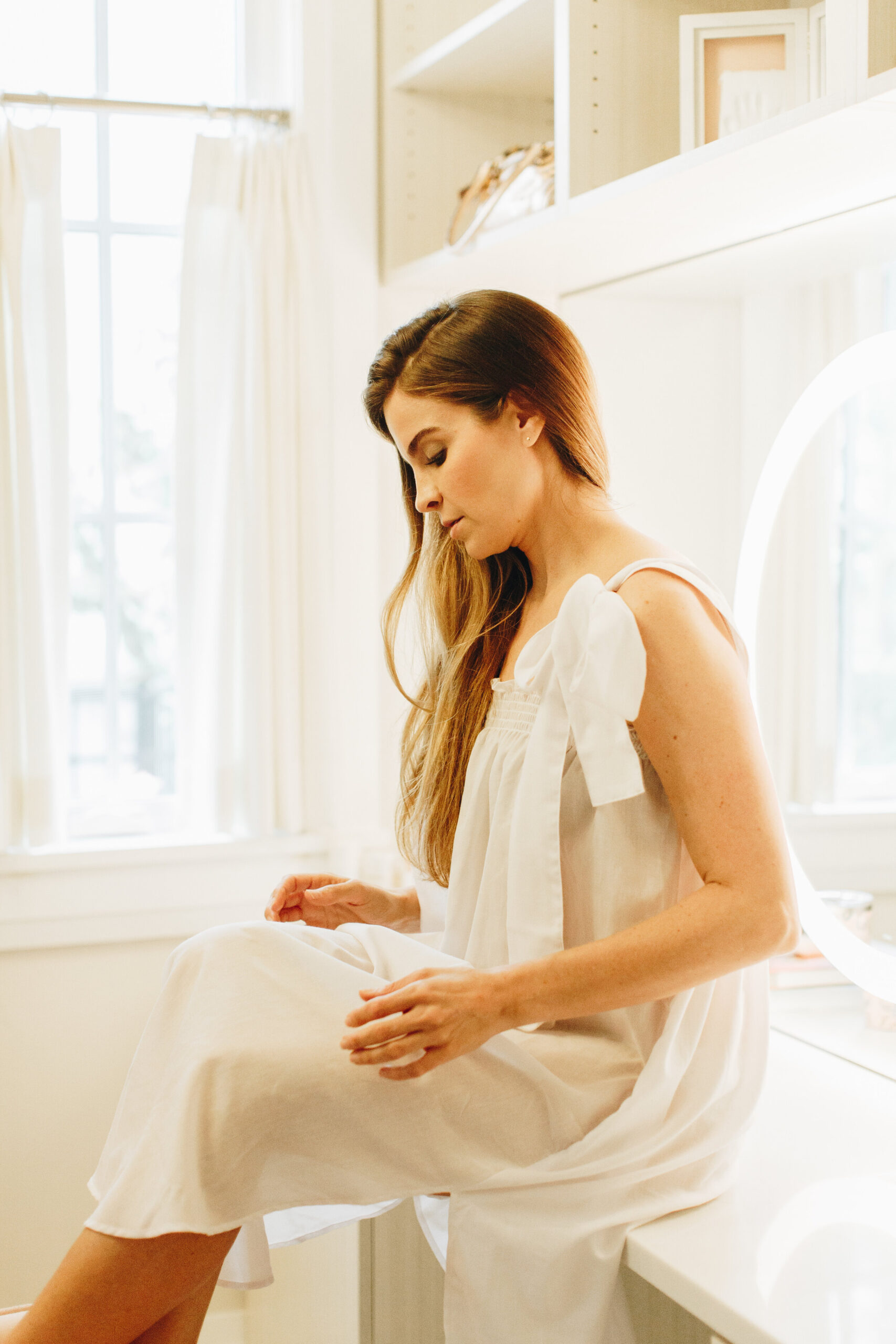
This week on the podcast was all about Aesthetics, and I am so excited to share with you the details on a procedure I just tried that, so far, I love—RF microneedling.
While not new, it’s something I personally hadn’t tried before. I was drawn to it because it’s a procedure that claims to help your skin produce more of its own collagen; collagen of course is the building block of tissue, and the more you have, the healthier and plumper your skin appears. It’s why kids’ skin is so full and plump!
The older we get, the less collagen we produce naturally, so that’s where procedures like micro needling come in. They help to train our skin to produce more of its own collagen.
So, RF microneedling—let’s dig in!
RF Microneedling: Review and What to Know
What is RF Microneedling?
RF microneedling is radio frequency micro needling—a combination of both treatments that are designed to stimulate collagen growth through two modalities.
The first is the radio frequency, which uses low energy radiation (which feels like heat on your skin) to heat the layer of your skin called the dermis. The end result is the stimulation of collagen production, which can help with fine lines and wrinkles.
The second component of RF microneedling is the microneedling part. Microneedling is a procedure that uses either a pen or other device to make tiny holes in your skin, again with the end result of causing enough (healable) micro-damage to the skin that it also stimulates collagen production.
The combination of these two separate collagen-inducing modalities is what is supposed to make RF microneedling a great treatment for anti-aging and wrinkle treatment.
How Does RF Microneedling Work?
Ever heard of the “vampire facial?” That’s what this essentially is, because one of the steps in this process is…
Your Blood Is Drawn
An on-site nurse practitioner, esthetician or another qualified person will draw several vials of blood from your arm. For my first RF microneedling they took three small vials; for the second one only two.
They’ll take the blood back and spin it in a centrifuge to remove the plasma, which is surprisingly clear. (Also, time to note this now! If you a weak stomach, this may not be the procedure for you. Ha!)
The plasma comes back into play later, so stay tuned!
The Numbing Cream is Applied
The next step is to take this procedure down from crazy-painful to barely-noticeable. Thank God for the numbing cream! Your aesthetician will apply a thick layer of numbing cream and let it sit on the skin. We leave mine on for 30 minutes, and I suggest that amount of time to make sure that it really works and penetrates the skin for maximum numbing effect.
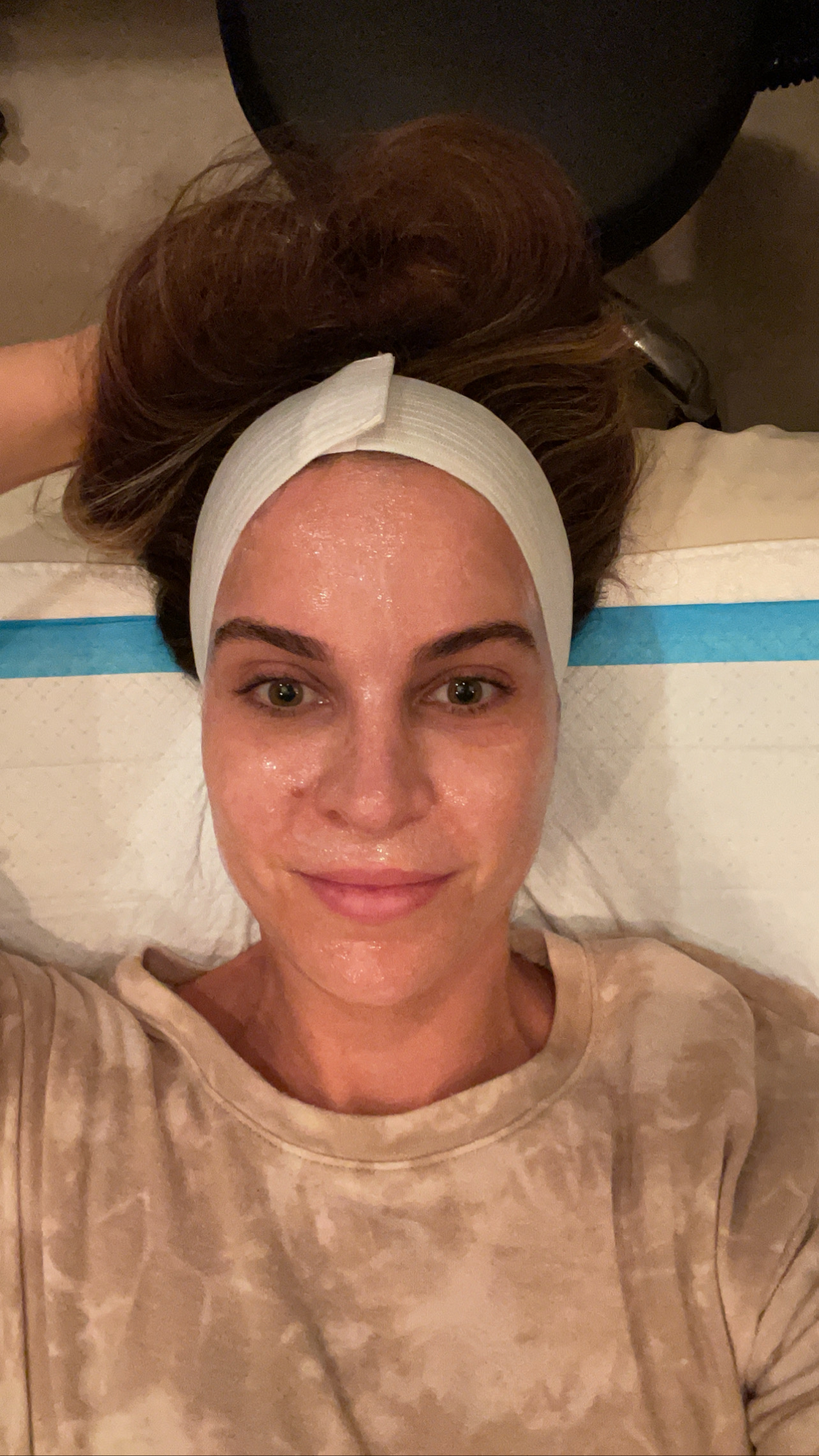
The numbing cream has the consistency of Vaseline; your esthetician will apply it to your face and let it sit for about 30 minutes. And yes, it works!
The Microneedling Begins
Oooh, this is the fun part! Who loves getting tiny needles punched into their skin?! In my procedure, the tech used a skin pen that pushes a bundle of tiny needles into the skin when she presses a button. So it’s not a rolling device, as you often see with at-home devices.
When she presses the button, it quickly pushes downward into the skin and back up. The clinic wouldn’t let me shoot video (wah wah) so this is difficult to describe without seeing it, but the closest thing I can compare it to is one of those address stamping machines, where the stamp is in the middle of a handle device and comes down to touch the paper. The paper here is of course your skin, and the stamp, the needles. It’s a quick motion, but they have to cover every square inch of your face, so there are lots of little “punches.”
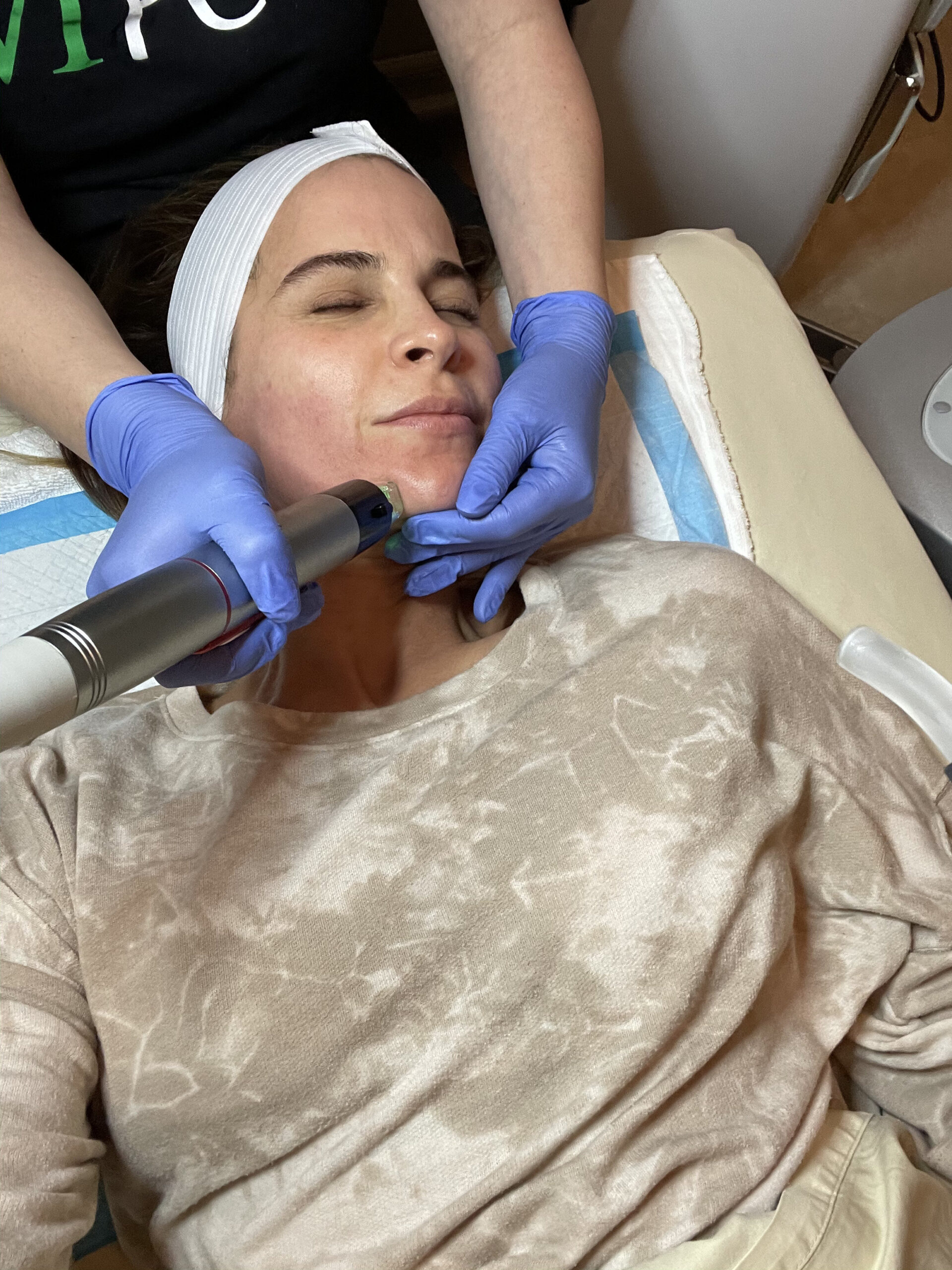
In the middle of the RF microneedling process. The expression of pain is genuine.
My tech divided my face into three sections—the chin and lower cheek, which she passed over three separate times; the mid-cheek, cheekbones, mustache and nose, which she passed over twice; and the forehead and temples, which she also passed over twice.
Note: The numbing cream wears off a bit after the first pass, and your skin is a little more sensitized, so as a result it hurt just a touch more on the second and especially third passes.
The whole face takes about 30-40 minutes, and they gave me a handheld cold air-blowing device that I was able to point at the spots she was treating, to help cool the skin and distract me from the needling.
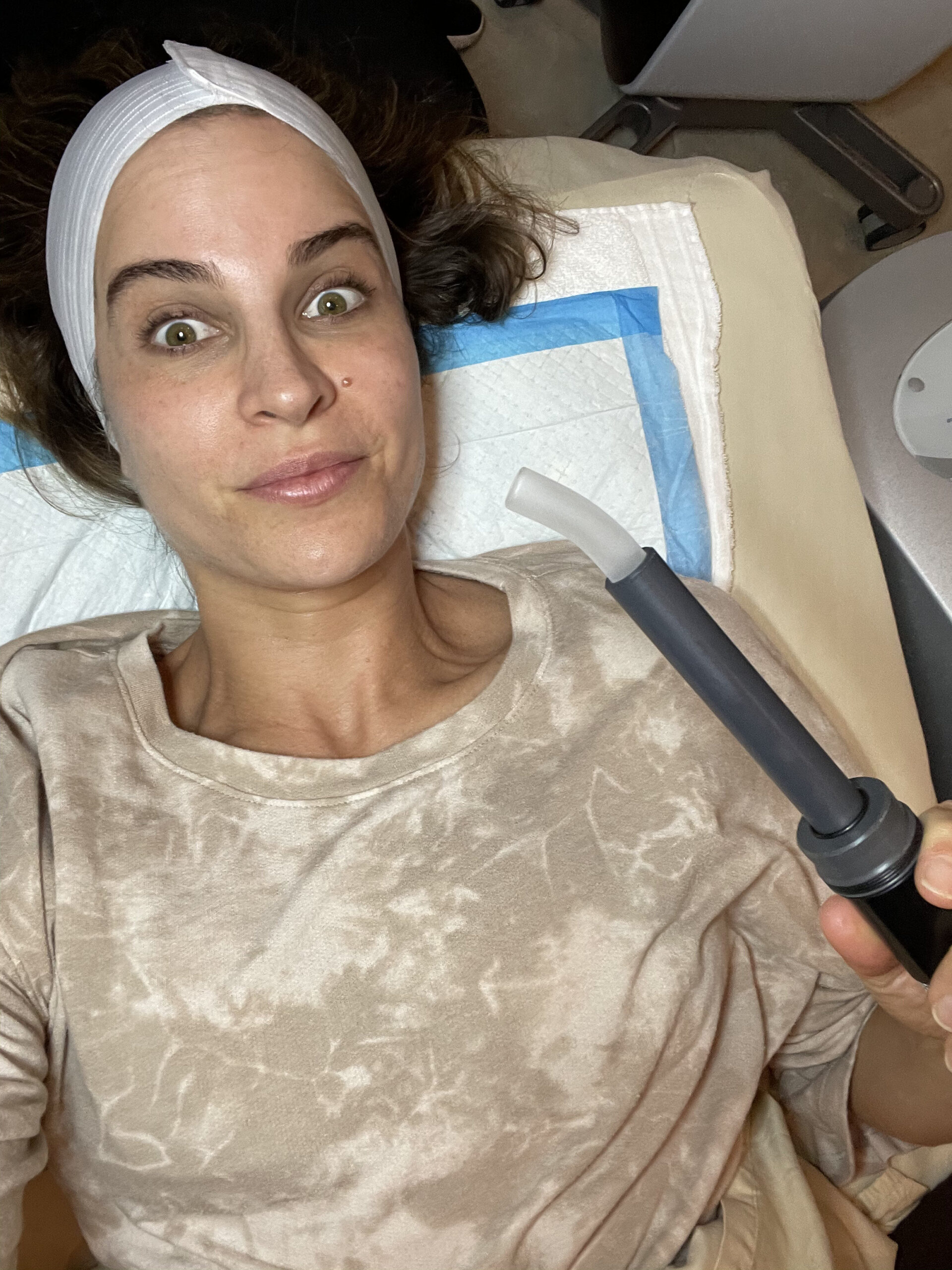
This blows out a steady stream of cold air, to relieve the pain from the heat and the needles. Yes, it does help a ton!
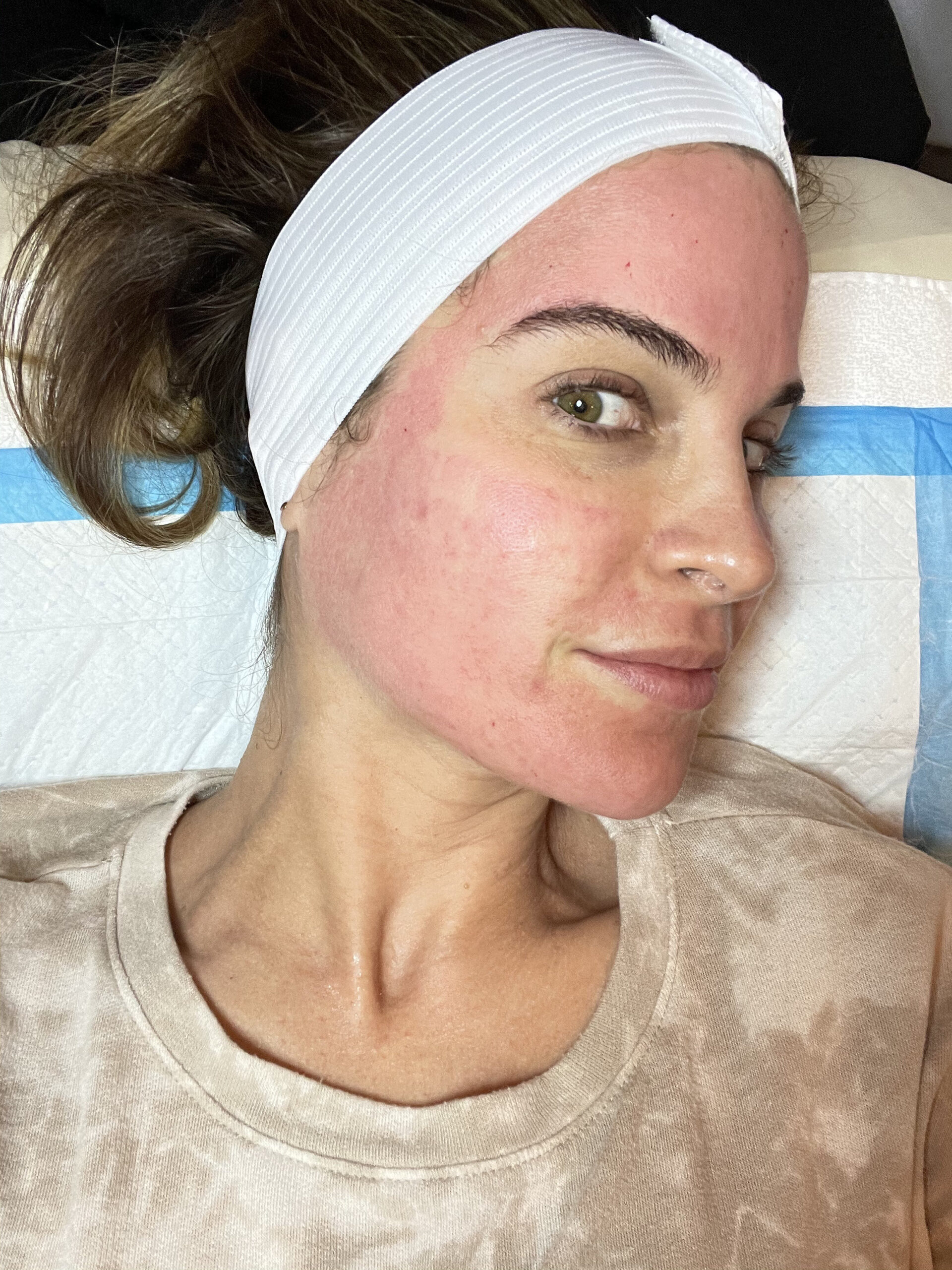
My face immediately after the RF microneedling treatment
Next Up, the “Vampire” Part: The Plasma is Applied to the Skin
This is the cool or gross part, depending on how strong your stomach is! Ha! The aesthetician will take the plasma that was pulled from your blood in a centrifuge and apply it to your face.
A thin layer is applied to your still-red and a little bloody face (sorry! graphic!), and your skin will soak most of it right in. Because you don’t want to waste any (the plasma is rich with your own growth factor, which is what really gets into the layers of your skin to rejuvenate it), your tech will use as much as she can. We layer it on pretty good, so much so that when it dries it kind of leaves a sticky film on the face.
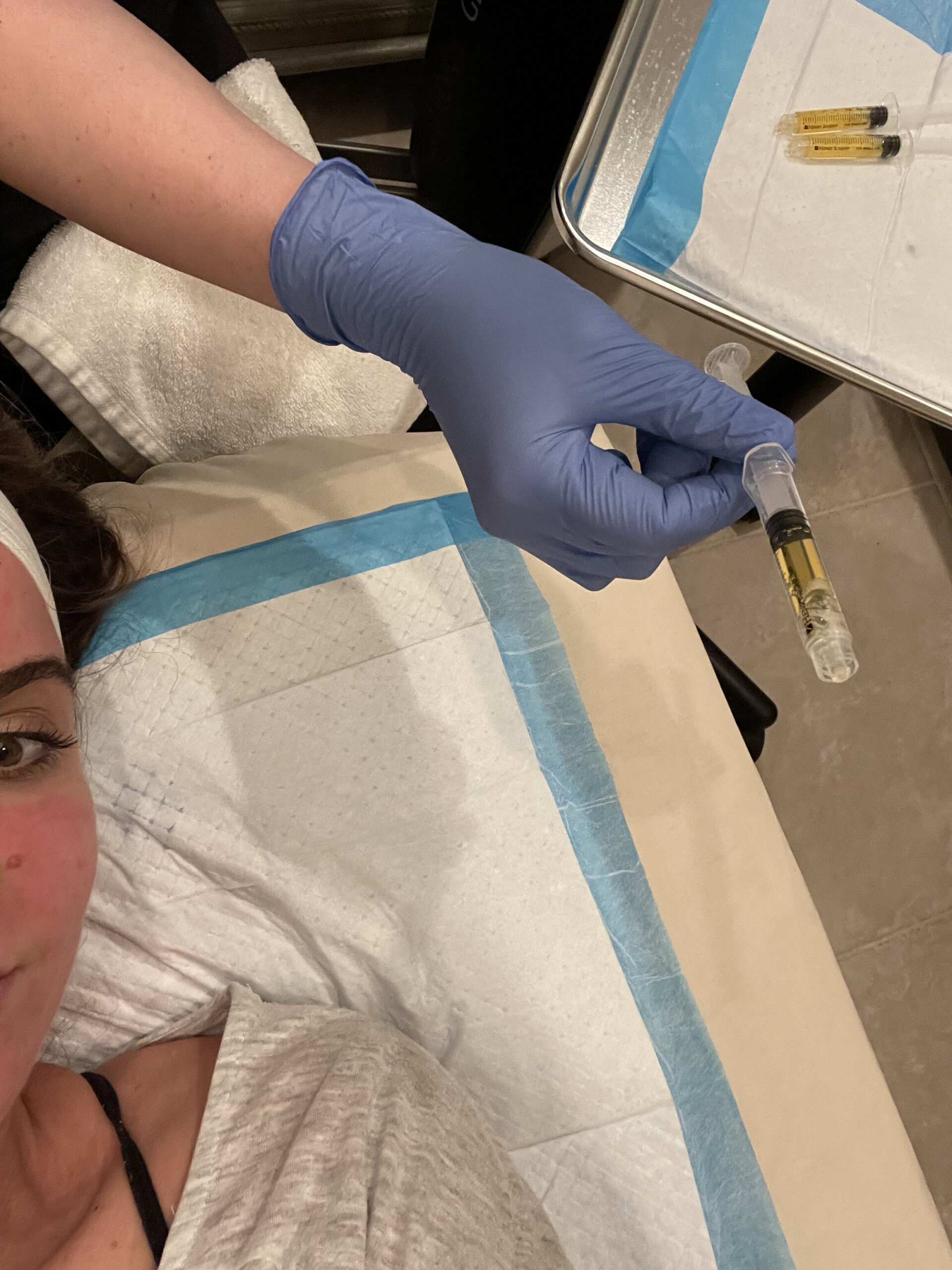
When your blood is spun in the centrifuge, this clear plasma comes out and is what is put onto your face right after the treatment so it can soak in. It’s packed with your own growth factors, which is said to help stimulate collagen growth and skin healing.
How Much Time Does it Take to Heal from RF Microneedling?
After your session, your face will be red for 4-5 hours, and your aesthetician will encourage you to not wash or touch your face for the rest of the day. (I try to book afternoon sessions when possible because of this.)
There’s minimal discomfort at this stage; your skin just feels very taut as the plasma continues to soak in and peel off.
After about five hours, most of the redness was gone for me, and any excess plasma usually flakes off my skin. I don’t wash my face that night, and when I wake up the next day, my skin is completely normal-looking.
The Best Skin Care to Use After RF Microneedling
The plasma is truly the good stuff here, but that’s gone by the next day. After care with RF microneedling, then, is also super important!
I like to use Skin Medica’s TNS products to continue to infuse my skin with growth factors as my skin heals. I’m the first person to be wary of buying an unnecessary product, but I can’t recommend this post-care kit enough. It’s actually a great deal, considering all the full-size products you get.
I highly recommend using growth factor products after a procedure like this, since you want to maximize the time that your skin is ready to receive beneficial ingredients. So anything with growth factor, do it!
Click here to check it out!
Does RF Microneedling Hurt?
This is the most-asked question when it comes to RF microneedling! My short answer is no. But this comes with a couple caveats! First, this is assuming your esthetician is using effective numbing cream that is on your skin for at least 30 minutes prior to treatment. Second, my pain tolerance is fairly high, and I have absolutely no fear or squeamishness with needles. If you’re the type of person who hates giving blood, this may not be the most pleasant procedure for you.
As for the microneedling part itself, the first pass doesn’t hurt much; the numbing cream really did its job. But on the second pass, I felt a little pinch. On the bottom of my face, where she did three passes, I felt a lot more on the third time. But did it hurt? Not anything more than the feeling of a slight pin prick.
How Many Sessions of RF Microneedling Do You Need to See Results?
My esthetician says it’s best to do this procedure in a round of three. Since each session is equivalent to two traditional microneedling sessions (the ones without the radiofrequency part), doing three total per year is enough to see serious results and keep them up. You should do each session within 4-6 weeks of each other for maximum effect.
I’m on session two and have already noticed an overall plumping of my skin. I haven’t had any fillers in almost two years, and I can hardly notice. This has really seemed to stimulate some collagen regrowth in my skin.
© 2022 WGT Designed by leche studio
PRIVACY & TERMS
CONNECT
NAVIGATE
Home
Blog
Work With Me
More From Us
Want to be the first to get the latest updates and news?
About
Podcast
Contact
